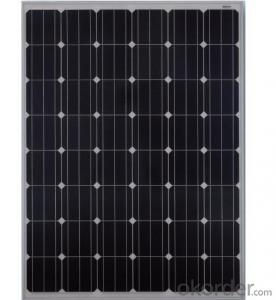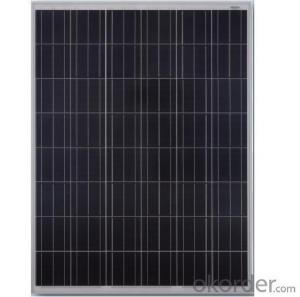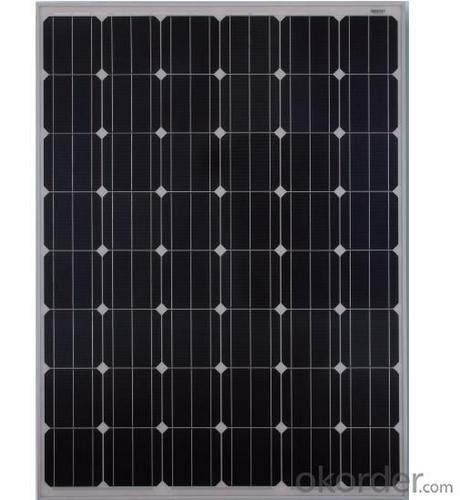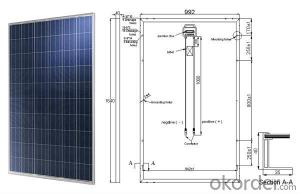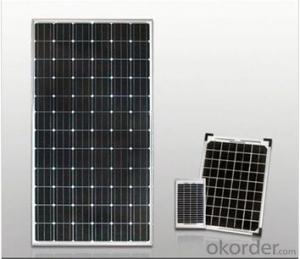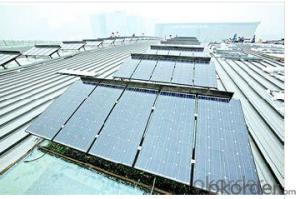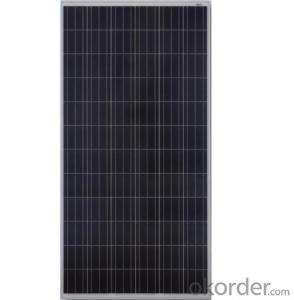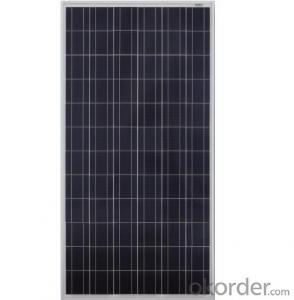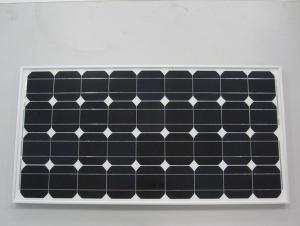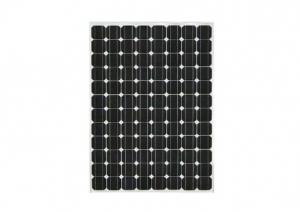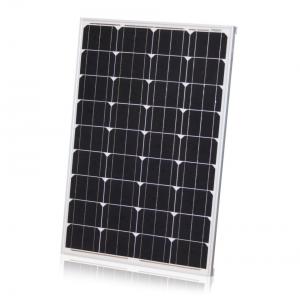Solar Panels Make Monocrystalline Solar Panel JAM6® 48 210W
- Loading Port:
- Shanghai
- Payment Terms:
- TT or LC
- Min Order Qty:
- 360 watt
- Supply Capability:
- 100000 watt/month
OKorder Service Pledge
OKorder Financial Service
You Might Also Like
JAM6(R)48 205-225W MONOCRYSTALLINE SILICON MODULE
Key futures:
Full square monocrystalline modules designed for residential and utility applications,rooftop or ground mount.
the latest module manufacturing technology,high power output and highest conversion effciency of 17.15%
Anti-reflective and anti-soiling surface reduces power loss from dirt and dust;
outstanding prformance in low-light irradiance environments;
excellent mechanical load resistance:certified to wothstand high wind loads (2400pa)and snow loads(5400pa)
high salt and ammonia resistance certified by TUV NORD
Datasheet:
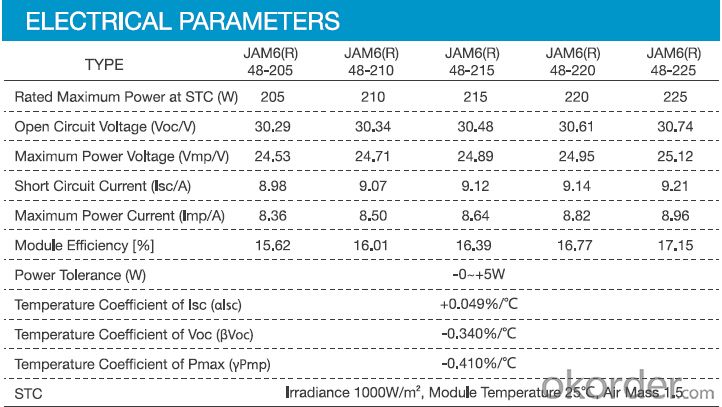
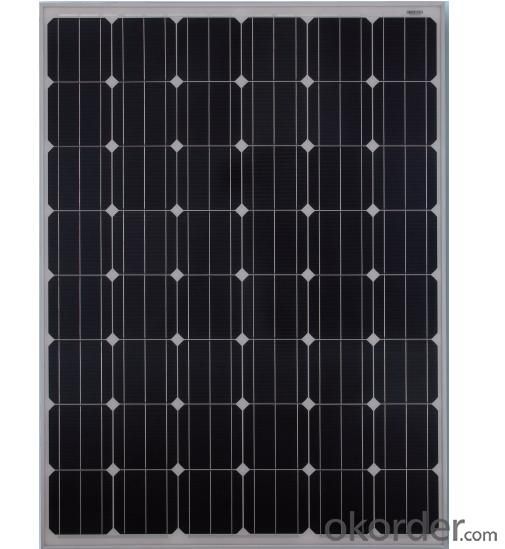
FAQ
1.How do I protect my solar system during subzero temperatures?
If you have a system that is operating in areas with subzero temperatures then freeze protection must be implemented. The easiest means of preventing freezing is to use a controller with a low temperatures setting, so when the manifold temperature drops below a certain pre-set temperature (5oC/40oF), the pump will circulate, warming the collector with water from the bottom of the storage tank. The pump will not run continually, just periodically, the frequency of which will depend on the outside temperature. In extremely cold areas, a closed loop using a glycol/water mix may be appropriate.
2.Will water be heated on a cloudy day?
Yes. Although the heat output of the solar collector is reduced on overcast days it will still be able to provide heating. If it is a heavily clouded day or raining, then more gas or electric boosting may be required to maintain water at the required temperature. This system will be automated so you don't have to worry about running out of hot water on a rainy day.
- Q: Are there any government incentives or tax credits for installing solar panels?
- Yes, there are government incentives and tax credits available for installing solar panels. These incentives vary by country and region, but they often include federal tax credits, state or provincial rebates, and local grants or loans. These financial incentives aim to promote the adoption of renewable energy sources and help offset the initial costs of installing solar panels. It is advisable to consult local authorities or renewable energy organizations to learn about specific incentives available in your area.
- Q: I am researching several solar panels to install in my house. I would like to use a 40 watt panel to connect, through a solar battery controller, to a battery or two. I would then like to use the solar panel (40 watts) to charge the battery(ies) for emergency use. Once charged, and when needed, I would like to use the battery(ies), 2 volt deep cycle, to power several LED lamps. Since I am new to solar power I had several questions...Is a 40 watt panel strong/large enough to charge a 2 volt deep cycle battery or two?How long would it take to charge one of these batteries?What would be the expected cost to purchase necessary supplies? (With the solar panel, battery controller, and MC4 cabling I've found I have an expected cost of roughly $00.00 with batteries)Would this be difficult for someone with little experience in this field?
- There okorder / Why pay thousands of dollars for solar energy ($27,000 average cost) when you can build your own solar panel system for just a fraction of the retail cost. You can build a single solar panel or you can build an entire array of panels to power your whole house. Some people are saving 50% on their power bill, some people are reducing their bill to nothing. But what’s most impressive is that just by following these instructions some are even making the power company pay them!
- Q: I have noticed how solar panels cause a glare. Since I am not around solar panels all the time I relate it to when the sun reflects off another car and right into my eyes. So I always wonder if solar panels effect birds and/or animals due to the glare. If I am wrong and solar panels aren't this bad please tell me.
- mynameismud, you are hilarious. I cried i laughed so hard. Holy crap, how old are you?
- Q: Hi All,I need some resources for a research project i'm doing on Solar Panels/Cells.So do you know of any good books or online materials that basically covers how solar cellwork from level 0 to calculating the energy output based on intensity of the light and the area of the panel. Book titles will be preferable but i'd like to build a strong base before tackling long and complicated formula(s)... so any suggestions? Your help will be appreciated :)THANKS IN ADVANCE!!
- How Solar Cells Work by Scott Aldous Inside This Article . Introduction to How Solar Cells Work 2. Photovoltaic Cells: Converting Photons to Electrons 3. How Silicon Makes a Solar Cell 4. Anatomy of a Solar Cell 5. Energy Loss in a Solar Cell 6. Solar-powering a House 7. Solving Solar-power Issues 8. Solar-power Pros and Cons 9. Lots More Information 0. See all Physical Science articles You've probably seen calculators that have solar cells -- calculators that never need batteries, and in some cases don't even have an off button. As long as you have enough light, they seem to work forever. You may have seen larger solar panels -- on emergency road signs or call boxes, on buoys, even in parking lots to power lights. Although these larger panels aren't as common as solar powered calculators, they're out there, and not that hard to spot if you know where to look. There are solar cell arrays on satellites, where they are used to power the electrical systems. You have probably also been hearing about the solar revolution for the last 20 years -- the idea that one day we will all use free electricity from the sun. This is a seductive promise: On a bright, sunny day, the sun shines approximately ,000 watts of energy per square meter of the planet's surface, and if we could collect all of that energy we could easily power our homes and offices for free.
- Q: if car companies install solar panels on cars, like in all the car were the sun can reach that would reduce the consumption of gas in the summer, and might save some energy for winter and if that energy is not enough they can use gas or electricity i think that would be a lot of savings, and less contamination i don't know that is my idea what do you people think?
- Understanding Physics and something about electrical power is normally needed to solve this problem. Here is some info that may help put it into perspective: One average solar panel approx 3ft. X 4 ft may produce 00 watts of power during peak performance times. A VERY small car will require a minimum of say 0-30 HP to be viable. (An old VW had 40HP) 00 Watts continuously will produce about 0. HP (/0 of one HP), so to get 20 HP, I would need how many panels? About 0 panels to get one Horsepower? Where do I put them? note: ONE HORSEPOWER = 746 WATTS SOLAR IS GREAT, BUT NOT CHEAP AND NOT RELIABLE ENOUGH IN MOST AREAS TO DEPEND ON FOR NECESSITIES. IT IS VERY GOOD FOR SUPPLEMENTAL POWER USES AND CAN REDUCE OUR USE OF CONVENTIONAL FORMS.
- Q: Can solar panels be used in countries with limited sunlight?
- Yes, solar panels can still be used in countries with limited sunlight. While solar panels are most effective in regions with abundant sunlight, they can still generate electricity in areas with less sunlight. Even countries with limited sunlight exposure can benefit from solar energy by utilizing advanced solar technologies and optimizing panel placement to maximize energy production. Additionally, solar panels can still generate electricity on cloudy or overcast days, although at a reduced efficiency compared to sunny days.
- Q: Can solar panels be installed on billboards?
- Yes, solar panels can be installed on billboards. In fact, it is becoming increasingly common to see billboards equipped with solar panels to harness solar energy and power their lighting systems. This not only reduces the environmental impact of billboard advertising but also helps in promoting renewable energy usage.
- Q: Someone Said It costed them 50,000 To Install Solar Panel In their House and 35,000 For Installation. Is that true?
- Are they saying that the panels cost $5k and the installation cost $35k? Or are they saying the panels were $50k, plus another $35k for installation, making the total $85k? Possibly the data was from several years ago. $5k buys 6 kW of panels today, larger than goes on most houses. Installation depends on local labor costs, but should not be more than about $5k in the US, unless the system is huge, or unusual, such as a standalone system on a concrete pad, instead of just on the roof. The system on our roof is roughly 3 kilowatts. If installed today, the parts would cost about $9k. After federal tax credit, $7k. Labor depends on the local situation. We installed our own, so didn't pay any labor cost.
- Q: what do solar panels do?
- Solar panels (or photovoltaic panels) collect either light energy (photons) or heat which is then used as energy. Because a single panel can only produce a limited amount of power, there are normally more than one installed.
- Q: How do solar panels withstand hail and other extreme weather conditions?
- Solar panels are designed to be durable and withstand various weather conditions, including hail and extreme weather. They are typically made with tempered glass, which is highly resistant to impacts from hail and other debris. Additionally, the solar cells are encapsulated in a protective layer of materials such as ethylene-vinyl acetate (EVA) and fluoropolymer, which provide further protection against weather elements. The structural design and mounting systems also ensure that solar panels are securely installed to withstand strong winds. Overall, the combination of robust materials and careful construction allows solar panels to withstand hail and other extreme weather conditions.
Send your message to us
Solar Panels Make Monocrystalline Solar Panel JAM6® 48 210W
- Loading Port:
- Shanghai
- Payment Terms:
- TT or LC
- Min Order Qty:
- 360 watt
- Supply Capability:
- 100000 watt/month
OKorder Service Pledge
OKorder Financial Service
Similar products
Hot products
Hot Searches
Related keywords
